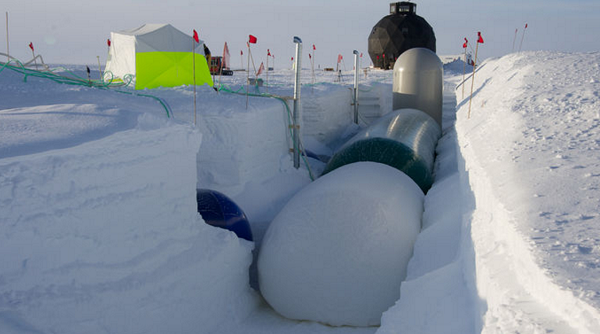Balloon Shuttering
Catalogs:
Overview
Iinflating giant balloons under the snow to form surprisingly strong—and environmentally friendly—cylindrical tunnels.
The technique works like making a hot dog, says the method’s pioneer, Jørgen Peder Steffensen, a physicist at the University of Copenhagen. “Using snowblowers we cut a trench—that’s the bun,” says Steffensen, who also heads logistics for the East Greenland Ice-core Project (EastGRIP), a research effort focused on understanding the history of the ice sheet. “The balloon is the shape of a giant hot dog, and we inflate it in place below the surface. Then we throw snow back on top”—the condiments, in this analogy—“and the snow hardens on top of that.” Days later, the balloons are deflated and taken away, leaving behind tunnels that provide shelter, workshops, or storage for scientists.
In the past, polar engineers in Greenland and Antarctica used flat wooden beams or curved aluminum shoring to create ceilings above icy walls and floors. Snow would accumulate above and harden. But over time, the ice would deform and contract, leading to sagging ceilings and narrowing walls that could eventually close completely.
[Source]
-
No tags applied

